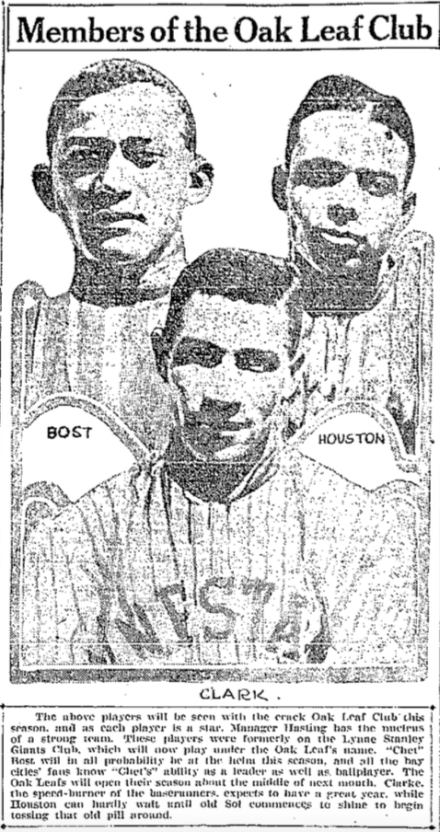
Oakland Tribune-Oak Leafs, Feb. 13, 1916-pg.30
“These players were formerly on the Lynne-Stanley Giants Club, which will play under the Oak Leaf’s name.”
The Oak Leaf Club, sometimes called the Oak Leafs were in fact the Lynne-Stanley Giants.
Every once in a while, you run across this name: Chet Bost
Chester Allen Bost, was born on October 3, 1890, in Fresno, CA., to parents John and Alice Bost, who were originally from North Carolina, and migrated West before the Great Migration, between the years of 1888 and 1889. According to the 1900 U.S. Census, Chester A. Bost, better known as “Chet” was one of nine children. This large family owned their own home, free and clear of mortgage, at 128 M Street, in Fresno, CA.
John Bost, and Chet’s bother, James were ‘Teemers’, and more than likely worked at the Fresno Brewing Company, where they unloaded grain for beer making. Chet’s older brothers, William and John worked as a ‘boot black’ and ‘barber’, which added dollars to the family’s income and financial stability.
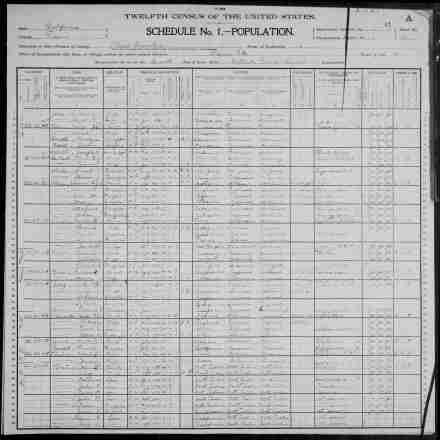
Lynne B. Stanley was an Oakland merchant, who owned a Men’s haberdashery , but was also one of Oakland’s principal community leaders.

He sponsored auto racing, baseball, and was also the main founder of the Athens Athletic Club in Oakland. whose origin reaches back to 1919.
According to the Oakland Tribune, September 27, 1925:
“It was in April, 1919. that Lynne Stanley then a local merchant, first broached the suggestion for such a club. He pointed out that nearly every important city had an athletic club, with a fine, modern building and with the leading citizens of the community in its membership, except Oakland. Stanley determined that Oakland should have such, an institution. Within the next few days he-had prepared a typewritten sheet stating that those whose names were undersigned would help organize an athletic club. Then he started out to get signatures. Stanley submitted his plan to one after another of the business and professional men of the city, obtaining a name here and another there.“
Leaders lead. Lynne Stanley was a leader, and knew leadership quality when he found a young Chet Bost, and asked him to lead the Lynne Stanley Giants, one of the preeminent African American baseball teams on the West Coast. They played their seasons at Grove Street Park, Bayview (Ernie Raimondi ) Park, Klinknerville (Freeman’s) Park, and sometimes Oaks (Emeryville) Park.
Those are the basics.
Not much is known about Chet Bost, or how he got his start in baseball. Documenting his career in the early years is a laborious task, given what remains intact about his history in general. He played for a brief, but memorable period, for both the Occidentals of Utah and the Chicago Giants in 1911, before becoming the ‘captain’ of the Lynne Stanley Giants in 1914.
How long he played for the Occidentals or Chicago Giants is questionable, but he spent a longer period with the Occidentals, shortly before the State League went under. Records indicate that he played with the Occidentals from April 10 to July 16 of 1911.

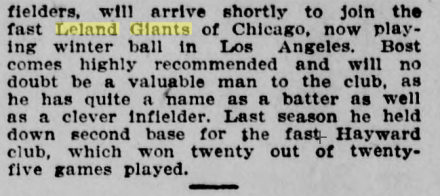
Los Angeles Herald-Number 119, January, 28, 1911

Los Angeles Herald – McCormicks vs. Chicago Giants -February 11,1911

Salt Lake Tribune, April 16, 1911

Salt Lake Tribune-May 14, 1911

Salt Lake Tribune– June17, 1911
Bost hit two home runs in a single inning while playing for the Occidentals in 1911. Major League Baseball records showed that the last person to perform such a feat was Jake Stenzel (AL) of the Pittsburgh Pirates in 1894, and the next would be Ken Williams (NL) of the St. Louis Browns in 1922. This accomplishment would make Bost a regional celebrity throughout the West for years to come.
In 1912, Bost would play shortstop for the Oakland Giants, a semipro team, managed by a fellow named Watson. The Oakland Giants team was comprised of: “Herb” Clarke second base and team captain, B. Martin at first base, Houston at third base, Warwin Martin behind the plate, Hillary “Bullet” Meaddows pitching, Richardson in center field, with Durgan in left field and White in right field, and Hawkins as utility man. They would be the building blocks for the Lynne-Stanley Giants of 1913 and 1914.
By 1914, Bost had taken over as the position of team captain from Clarke, while Watson retained his position as manager, and with the financial backing of Lynne B. Stanley, the Lynne-Stanley Giants were born.
“The Lynne Stanley Giants constitute the best colored baseball talent to be found in the bay county regions, and Manager Watson can brag of also having one of the fastest clubs around the country, for he has some men who have proved there ability in even faster company.
The Giants made the proud record in 1913 of winning 27 out of 32 games played, and they met such fast teams as the Modesto Reds, Sebastopol, Sam Mateo and Santa Rosa. The Lynne-Stanley Giants are even faster this season than last and have won a greater majority of their games by their fine fielding and strong hitting.
The infield is composed of experienced men at all positions. For Matthews at first base has more than proven that he can still dig them out of the dirt, and he save the infielders many an error by his clever work. “Herb” Clarke at second is considered a second “Jimmy” Johnston on account of his speed. He is very fast and a heady ballplayer and hits above the .300 mark at all times. “Bullet” Meaddows at third was the Giants mainstay in the box last season, but since he has shown his stellar work around third base to “Captain” Bost , there is not a chance of his being moved. He is a very good hitter and fast. “Chet” Bost, captain and short-stop, needs very little introduction. He trained under well-known baseball leaders. “Rube” Foster of the Chicago Giants and Frank Black of the Occidentals of the Utah State league, which one the pennant of 1910. Houston, Mitchell and Durrgan are this season — all hitting over the .300 mark, and it is very hard to drive a ball over this trios head, for they are all sure fielders with good throwing arms.” —- Oakland Tribune — edited by Bill Crosby, “Clever Colored Team, Which Plays Carnations Today” — July 5, 1914
Bost spent three years building the Lynne-Stanley Giants as one of the West most notable African American semi-pro teams. Which brings us to the year of 1916.
Soldiers returning from the Philippines, soldiers of the 24th Infantry stationed at the Presidio in San Francisco, is where Bost chose to ‘farm’ his new club. With Henry F. Hastings replacing Watson as ‘manager’, and the financial backing of Lynne B. Stanley gone, Bost reorganized the team he had helped build, and renamed them the Oakland Oak Leafs.
Hastings was a liquor salesman and a saloon keeper from Louisiana. In relationship to the time period, location of black owned businesses, and sporting events, Hastings fits into the picturesque seediness that was early West Oakland and Emeryville. Emeryville, CA. was the ‘Las Vegas of the East Bay’, long before Las Vegas was thought of.
Gambling, sporting events, book making, card clubs, saloons, race tracks, bootlegging and bordellos were all a part of the patchwork pattern of this industrial boomtown, Every race, gender, and social class intermingled openly, in full view of the public within the borders of Emeryville when it came to gaming and sports.
Emeryville was also the home of the Oakland Oaks of the Pacific Coast League.
In mid-Feb. of 1916, Bost secured two new twirlers. One by the name of Salsbury, who was supposedly a “regimental star pitcher”. The other, Blake, who was known for his curve ball. These two unknown pitchers were selected out of the nine regimental teams of the 24th stationed at the Presidio that returned from the Philippines in 1915. Salsbury was ‘sufficient’ as a fast ball pitcher, and Blake threw a mean, breaking curve ball, but as the season opener grew closer, his new picks (Scott, Brown, Blake, Smith, Salsbury and Daniels) would be shifted around to make room for additional members who had experience.
As “Captain” — Bost had high expectation for the Oak Leafs, and so did his returning players. By Feb. 20, 1916, “Henry” Hastings had lined up a squad of 17 men to choose from.
Houston, Richardson, Clarke, Meaddows, Bost, Dunlop, Salsbury, H. Smith, Scott, Blake, C. Smith, Brown, Couver, Swazie, Rhodes, Murillo, and Raymond. Pitching was still and issue though. Between Blake and Salsbury, both right handed tossers, Hastings was looking for something ‘special’. Hastings was in negotiations with Jimmy Claxton to bring his skills South to California and play in the Bay Area. Claude Couver, who had played with Claxton on the 1914 Lew Hubbard Giants (also known and the Colored Giants Of Portland) was already working out with the Oak Leafs in preparation for opening day.
In March of 1916, Claxton signed a ‘questionable’ contract with Gresham Giants of the Portland Inter-City League, in Oregon. Trouble was brewing within the league though. According to Ty Phelan, writer of “Dark Horse, The Jimmy Claxton Story“, Claxton dark hue caused significant problems for the “business men” who financed the Gresham Giants. This is more than likely the truth, but it would seem a cover story was needed.
“Considerable fuss has been stirred up because Eddie Bogart and Billy Stepp signed contracts with both the Gresham and St. John’s clubs. As the signed their names to Gresham parchments first, they will probably be declared property of that club.
Following are the players by the respective team leaders:
Gresham — Fred Garner, Tommy Townsend, Eddie Bogart, Billy Stepp, Ogden, Johnny Newman, Jimmy Claxton, Oliver Wendell Holmes, Roy Lund, Phillip Lind, Cack Blanchard, Phillips, Fred McKean, George White, “Tot” Manning, and O’Leary ” — The Sunday Oregonian — March 5, 1916
By March 21, 1916:
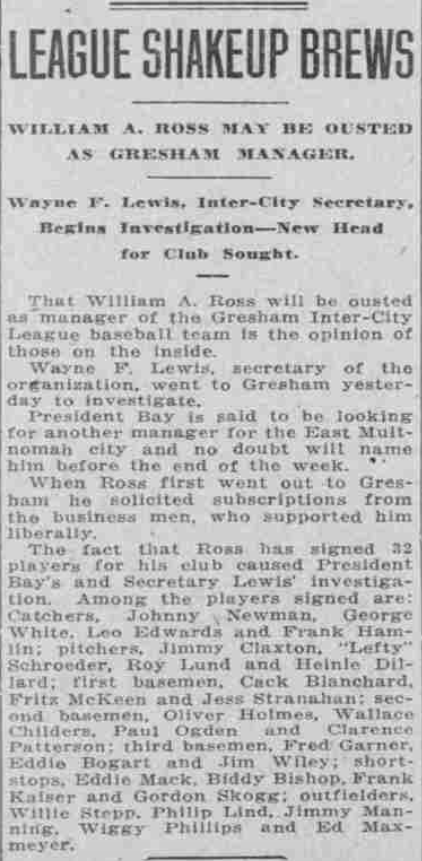
Morning Oregonian-March 21, 1916
Claxton made his way to the Oakland Bay Area, and was available for the season opener against the Bloomheart baseball team on Mar. 26, 1916, at 3:30 PM. Claxton probably reached Oakland, by train, on Mar. 22, days before the Morning Oregonian reported on the 25th that “League Officials Meet: William A. Ross Retained As Manager Of Gresham“, only to pitch against U.C. Berkeley on the 24th . Having no time to familiarize himself with his new team, or they with him, the Oak Leafs lost to U.C. Berkeley by a score of 8 to 6 — with Claxton giving up nine walks, and five hits, and Meaddows, Richardson, Woods, and Brown, absent from the line-up.
At least Claxton was still alive. When men lose their jobs, they are likely to do anything.
Out of the frying pan and into the fire as the saying goes, must have been Claxton’s motto

Oakland Tribune — April 2, 1916
Within weeks, Claxton ruled on the mound in his new found home. Bost and Hastings were elated by his continued performance and successes. Reading multiple articles from the period and knowing the historical terrain the Oak Leafs were based in, one could sense that Claxton’s exceptional notoriety would bring unwanted exposure to the Oak Leafs as a team. This imported player from Portland out shined the men who built the Oak Leafs from the early Lynne-Stanley Giants. It didn’t matter though. Claxton was enjoying the spotlight. He was grateful to have a place to play, when in fact, he could have probably played anywhere in the nation, had the racial playing field been level when he was heading towards his peak.
Hastings was 100% business, even if some of it was illicit business. Bost was 100% team oriented and focused, and Claxton was 100% star, who needed guidance and grounding.
Mixing this combination with weekly barnstorming and league play, while replacing players on a whim, is a dangerous cocktail when trying to take a team to the top. Bost was caught in the middle, with no escape in sight. Hastings relied heavily on Bost to manage a winning ball club at all cost. Bost relied on Hastings for his financial support of the Oak Leafs and business acumen to draw crowds for the gate. The end sum result would be a very high turnover in players. Winning was important, and the Oak Leafs were definitely winners, but camaraderie within a team environment is crucial to its success, and it also cultivates its longevity.
“Hastings is one of Oakland’s prominent business men and is trying to put the city in the limelight with an aggressive ball team. He sent away this season to import good talent for his team, as nothing but a winning team will suit him. He has his wires out now to land Dunlap of Vallejo, who is rated as a wonderful ball player. Hastings has put “Chet” Bost at the head of his team this season, as he thinks Chet’s ability is just about right, and he will cater only to the best of players for games this season, as he has a club that will compete with any of them.” — Oakland Tribune –“Comedy Keeps This Team On Toes” — April 2, 1916
Reported in the Oakland Tribune on May 14, 1916, that a week prior to the article, The Oak Leafs had once again beaten the No. 1 ranked Bloomheart team, by a score of 4 to 0. The caption read, “Oak Leafs Still Unbeatable“.
“Chet” Bost has the club going at top speed and deserves a lot of credit for the Brilliant manner in which the club has been going.
Jimmy Claxton and Couver are really a big league battery only in disguise, as they both are showing a lot of class, and with pitcher Dunlap are going to make the Oak Leafs some battery.
Claxton has struck out over eighty men in six games and in the last three only five hits and two runs have been made off him.
Scruggs, the new first baseman this season, is the best the club has had in years as he is a natural fielder and a good hitter.
Manager Hastings wants only to meet the fastest clubs and any of the country clubs can accept the invitation by communicating through Spauldings. Hastings says, “Just bring ’em on.” –Oakland Tribune, “Oak Leafs Still Unbeatable” — May 14, 1916
Many stories have been written about Claxton.
Most of them exclude his relationship with Chet Bost and Henry Hastings.
That two week period between May 14, 1916 and May 28, 1916, up to the day when Claxton first set foot on the mound for the Oakland Oaks of the PCL, are open for speculation. ‘Maggie’ the missing pig, the Oakland Oaks most prized mascot, supposedly eaten by the Oaks secretary — was not the reason the Oaks were in a slump, nor was it because Rowdy Elliot ‘rubbed’ the head of Erasmus Pinckney Johnson the wrong way, before a game in April against the Los Angeles Angels.
There are those who say that Claxton was introduced to Herb McFarland, Secretary of the Oakland Oaks, by a fellow named “Hastings” of Native American descent from Oklahoma, and that Claxton provided documentation asserting to the claim that he was indeed a person of ‘Native American’ descent. Others believe that Claxton was outed by a ‘friend’ who pointed Claxton out to Oaks officials at a bar on 7th Street in West Oakland, that ‘friend’ of course being Elliot himself.
From race to rumor, from rumor to superstition, killing the Claxton bird was worth two in the bush. The press he was receiving in those daysfrom main stream media, for an African American pitcher shutting out team after team in the West, as truly amazing.
Oakland needed a winning team, it just didn’t need to be the Oak Leafs.
Then again, there is ‘that photograph’, showing Claude Couver, Henry Hastings, and Jimmy Claxton of the Oakland Oak Leafs from the Oakland Tribune in April of 1916, and the endless reporting by the Oakland Tribune of Claxton’s success on the mound as an Oak Leafs southpaw — with an amazing strikeout record! Any seasoned reporter who might have checked on the reason why Claxton left Portland, and what team he played with prior to hurling for the Oak Leafs could have been ‘the culprit’ who outed him.
Claxton never returned to the Oak Leafs after his short stint with the Oakland Oaks.
The Oak Leafs played a few more games after that, but their new pitcher Scruggs wasn’t the same gate lure as Claxton. After Claxton left, Hasting had to move his team and give up Freeman’s Park as their home field spot. Moving the club to St. Mary’s College field, Hastings found it difficult to secure games with other teams. The Oak Leafs, formerly known as the Lynne-Stanley Giants would never reorganize next year, nor play under that name ever again. Claxton was a major draw when it came to home town fans, but there was no way he could return to play for the Oak Leafs after the Oakland Oaks debacle. It hit to close to home, and the wounds were still fresh.
The PCL farmed from semi-pro teams in the area, especially the Oakland Oaks, but no African American ever attempted to enter J. Cal Ewing‘s all-white baseball dynasty. And now, Ewing’s front office had inadvertently hired a “colored fellow” as a pitcher, from a extremely well known African American semi-pro club, in the local area.
“If I were a player working for McCredie, and he asked me to go out and play against these colored fellows, I would refuse to do it for him.”…
“There are two classes I bar from playing on my ball park—colored tossers and bloomer girls. They will never use any park I control.” — The Morning Oregonian – J. Cal Ewing –“Coast Magnates Draw Color Line”, January 24, 1914
After Claxton left the the Oak Leafs permanently, the Oak Leafs fell apart. According to Bost 1917-1918 World War I Draft Registration, he worked as a “Ice Cream Porter” at Bowen Ice Cream Company in his hometown of Fresno. Bowen Ice Cream Company would have a change of ownership in September of 1917, selling lock, stock and barrel to the Weimer brothers who brought in new equipment to increase production to 1,500 gallons a day. It would be close to three years before Chet Bost would play for a truly significant team again.

1917-1918 World War I Draft Registration, Chester Allen Bost

Ice Cream Review, Vol. 2, September 1917
Bost played for local teams, like the Weilheimer Giants in 1917, sponsored by L.H. Weilheimer, Indian (motorcycle) Agent, who had dissolved his partnership with Hertwick & Weilheimer, and taking over Mr. Hertwick’s interest in the business. Building a new showroom, Weilheimer needed as much publicity as he could afford. The Weilheimer Giants were more of a advertising platform for Weilheimer’s new business venture. Weilheimer was certainly not as sport minded as Lynne B. Stanley. His main focus was on all that was motorcycles and mechanical, which led to patents on motorcycle devices, including like the ‘Moto Meter and Radiator Cap Lock ‘ in 1919.
The Shadow Giants seem to have been Bost’s 1918 attempt to get a local team going after Weilheimer pulled his backing. Eddie Jackson was ‘captain’ of the Shadow Giants, and played catcher as well. Gene Cooper, who played for the Los Angles White Sox, pitched for the Shadow Giants. Billy “Bullet” Woods held down short stop.
The 1919 Shasta Limiteds were a different group though under the ownership of Tod Graham. Bost seemed to be getting back on track, gathering a team that compiled such men as Billy Woods, Goldie Davis, Gene Cooper, Jimmy Claxton, Carlisle Perry, Houston, and Hillary Meaddows, and Eddie Jackson as his co-Capatain.

1919 Shasta Limiteds, Northwest Dispatch –February 7, 1983 — courtesy of Ty Phelan

Oakland Tribune — June 30, 1919
Great Game Between Tractors And Shasta Team Ends In Ninth-Inning Row: San Leandro Mayor Puts Stop To Greatest Bush Game Ever Put On Here. Bad Decision by LaRue and Too Much Baumgarten Is Cause Of Near Riot. — Oakland Tribune — By Eddie Murphy — June 30, 1919
C.L. Best Tractors were the 1918 Mission League Champions. So on that fateful day, the 30th of June 1919, a lot was at stake. ( In 1925, C. L. Best Tractor Company and Holt Manufacturing Company merged to form Caterpillar Tractor Company )
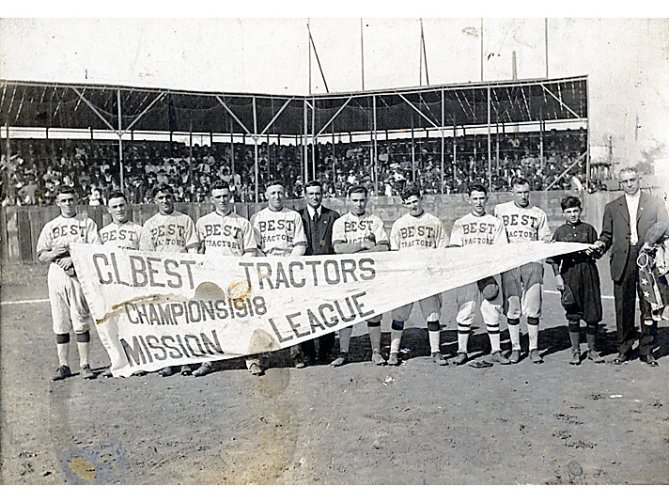
C.L. Best Tractors 1918
“The main topic among the bush baseball fans this week will be the game to be played at San Leandro next Sunday afternoon in which the C. L. Best Tractors of that town and the Shasta the colored organization of Oakland, will clash In the first battle of their three-game series. The game is expected to figure in deciding the bush championship of Northern California, and also promises a great pitching battle between Johnny Gillespie and Jimmy Claxton. the strikeout kings of the bushes. The colored boys have met the best amateur teams and held their own, but it will be the first time they clashed with the Tractors.” — Oakland Tribune — June 23, 1919
This game would be the first game of a three game series, Gillespie vs. Claxton, for the semi-pro championship of Northern California. Bost was placed in the middle once again. The first game of the series was deemed a ‘tie’, although it involved a lot more than a dueling battle between Claxton and Gillespie. Bost, as “captain” of the Shasta Limiteds was thrust into the middle again. In the ninth inning, Bost was tasked with protecting Umpire Larue from fans who thought Larue made a bad a call at home plate.
A fellow named ‘Jake Baumgarten”, who seemed to be a agitator/spectator, caused havoc on the field that day, when a bad call was made in the ninth inning by Umpire, Louie Larue, allowing for the tied score of 1-1. Baumgarten was the umpire that Risberg had leveled with a single blow after he called a third strike on Risberg. Baumgarten was not officiating the game, but felt compelled to speak his mind about the bad call, and other things. He took a megaphone and headed towards the center of the diamond.
Kelly Boyer Sagert and Rod Nelson, write a terrific biography about Swede Risberg, where it mentions Swede having to skip town after having a run in with ‘a man’ at a White Sox team hotel in New York.
The Oakland Tribune states:
“Charley (Swede) Risberg, Chicago White Sox player is not the only one who can boast a one-second decision over Jake Baumgarten. Yesterday afternoon at the San Leandro ball park the biggest crowd to witness any bush game this season was out and hoping to see the C.L. Best Tractors and the Shasta Limited battle for the Northern California bush championship. They saw part of it, and the reason they did not see it all was because Jake Baumgarten made himself a little too busy trying to tell those fans what they should do. The result was a big crowd after Jake and the first fellow to arrive within reach of him planted his paw squarely on his mouth. Jake lost a tooth or two.
Jake was rescued by a few fellows who did not want to see murder committed. but Jake got mad and went out on the field with a bat. He came to Eddie Jackson, catcher of the Shastas, and Eddie being a little too wise for Jake let his fist fly and Jake hit the ground almost as quick as he did the time Risberg dropped him for the count at one of the Shipbuilder’s League games.” — Oakland Tribune — “Great Game Between Tractors And Shasta Team Ends In Ninth-Inning Row“– By Eddie Murphy — June 30-1919″

Oakland Tribune — “Great Game Between Tractors And Shasta Team Ends In Ninth-Inning Row” — By Eddie Murphy — June 30-1919″
It seems that the entire 3 game series was filmed by the TRIBUNE-KINEMA man, including the fight.
Before the game Mayor Felton, Judge Gannon, C.L. Best, Manager Bill Wagner, and Toney Enos of the Tractors and Tod Graham of the Shastas, along with players of both clubs. paraded to the flagpole in center field, and hoisted the TRIBUNE pennant won by the Tractors while the movie man was busy turning the crank.
Many fans will want to see the movies so they will know for themselves just how the play at the plate which ended the game should have been decided. — Oakland Tribune — “Great Game Between Tractors And Shasta Team Ends In Ninth-Inning Row” — By Eddie Murphy — June 30-1919″
Bob Shand, of the Oakland Tribune, tells a similar, but slightly different version of the C.L, Best Tractors vs. Shasta Limiteds ninth inning brawl that day.
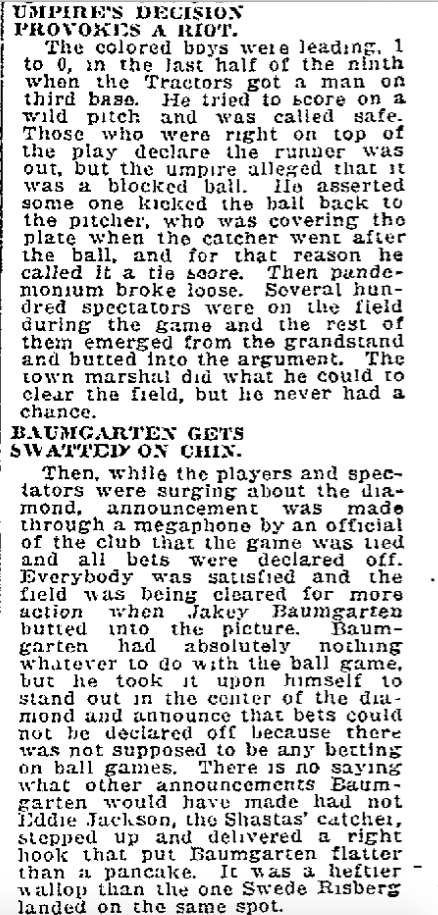
Oakland Tribune — “San Leandro Game Breaks Up In A Row” — by Bob Shand— June 30, 1919
Baumgarten’s major complaint, it would seem, had to do with the mention of “betting on ball games”. By witnessing LaRue’s bad call, he felt the game was rigged. Baumgarten was ejected from the playgrounds. It was a very exciting day in San Leandro.
One final team that Bost played for was the Oakland Pierce Giants.

“If relevant to your post, perhaps mention that (in 1923, I think) as a member of the Oakland Pierce Giants he and his teammates partied with Zenimura and the other members of the Fresno Athletic Club.”, — was a comment shared with this writer, by Bill Staples Jr., author of “Kenichi Zenimura, Japanese American Baseball Pioneer“.
The word ‘relevant’ leads to the U.S. Census Record for 1920 in Alameda, where Chet Bost lived in Japantown, and shared part of a duplex-house on Park Street with a man named “Kodama”, while working in the Oakland Shipyards as a laborer. Mary Dyson, an older widow, was the owner of the duplex. Renting her property to African American and Japanese men didn’t seem to bother her in the least. More than likely, Bill’s story about Zenimura’s Fresno Athletic Club partying together with Bost and the Oakland Pierce Giants is true — along with the other stories that have been bandied around about Chester Allen Bost.
Without “Captain” Chet Bost at the helm taking risk, playing with multiple teams in the West, and building quite a few of them from scratch like the Oak Leafs, there would have never been a 1916 Jimmy Claxon Zeenut card worth $15,000 in (NM) mint condition.
If you can find one.
Claxton may be the reason you never hear much about the Oak Leafs, formerly known as the Lynne-Stanley Giants.
Chet Bost is the reason they’ll always endure.
